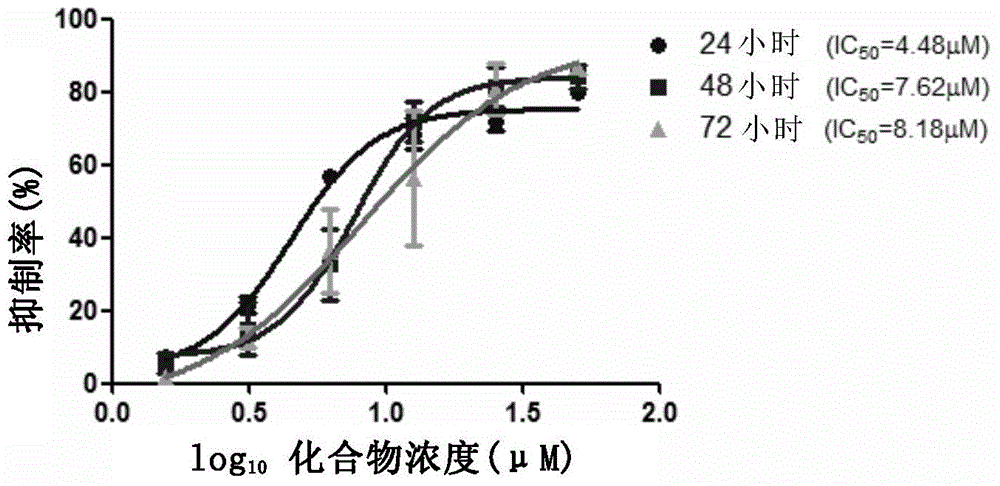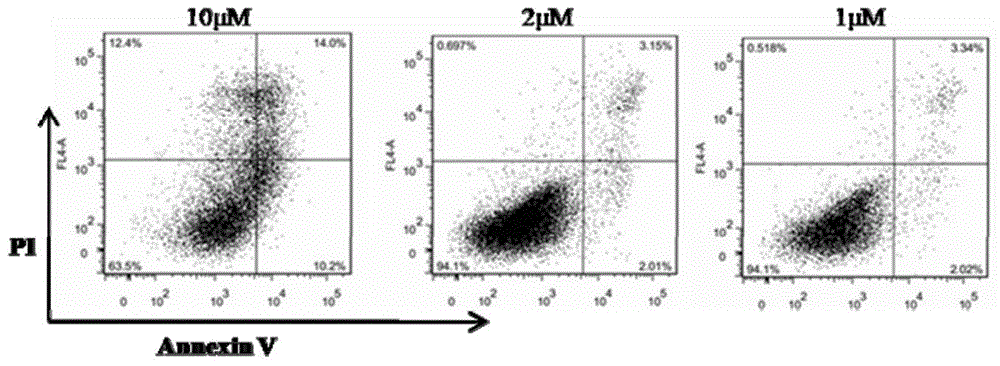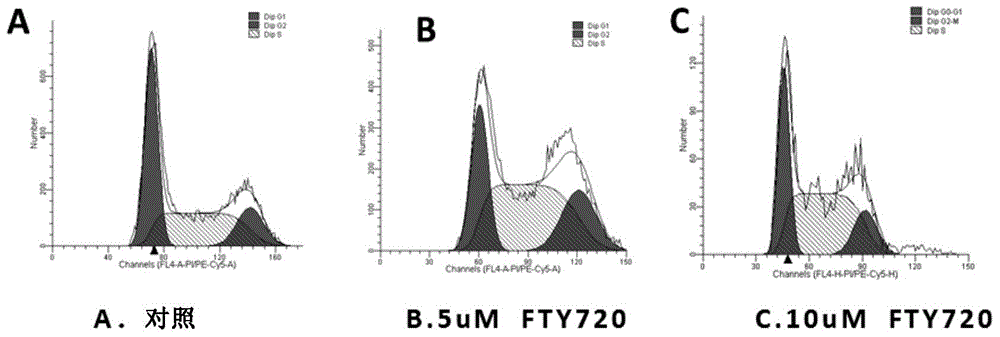Application of fingolimod or salts thereof in treatment of cystic diseases
A cyst and purpose technology, applied in the field of medicine, can solve problems such as no drug for delaying the disease, no effective treatment for ADPKD, and impact on the quality of life of patients
- Summary
- Abstract
- Description
- Claims
- Application Information
AI Technical Summary
Problems solved by technology
Method used
Image
Examples
Embodiment 1
[0082] Example 1: Effect of fingolimod on proliferation of human polycystic kidney cyst lining epithelial cell line WT9-12
[0083] Human polycystic kidney cyst lining epithelial cell line WT9-12 was cultured in DMEM / F12 medium with 10% fetal bovine serum, added with double antibodies, digested with trypsin and passaged. After about 70% of cell confluence, trypsinize, make cell suspension, count cells under microscope, and then inoculate in 96-well plate, 6×10 per well 3 cells. After synchronization, fingolimod treatment was given, and the concentration gradient of fingolimod was 50 μM, 25 μM, 12.5 μM, 6.25 μM, 3.175 μM, 1.588 μM, and 0.781 μM. The changes of cell proliferation after administration for 24, 48 and 72 hours were observed by MTT method. Aspirate the culture medium at each time point, add 10 μl MTT (5 mg / ml aqueous solution) to 100 μl medium in each well, incubate at 37°C for 3 hours, suck out the culture medium, add 100 μl DMSO to each well, shake at room tempe...
Embodiment 2
[0088] Example 2: Effects of fingolimod on apoptosis and cell cycle of human polycystic kidney cyst lining epithelial cells WT9-12
[0089] WT9-12 cells were treated with 2×10 5 Cells / well were seeded in a 6-well plate, and when 60-70% confluence was reached, the cells were treated with 1 μM, 2 μM, and 10 μM of fingolimod for 24 hours. Cells and supernatant were collected, trypsinized and centrifuged, washed with cold 1×PBS and then centrifuged at 1000 rpm / min for 10 minutes. Discard the supernatant, add 1×binding buffer, adjust the cell concentration to 1×10 6 cells / ml. Add 5 μl AnnexinV and 1 μl PI (100 μg / ml) working solution to every 100 μl cell suspension, incubate at room temperature in the dark for 15 minutes, add 400 μl 1× binding buffer, mix well and place on ice, then use flow cytometry to measure apoptosis as soon as possible death, the results are shown in Table 2 and figure 2 , fingolimod can significantly induce apoptosis in WT9-12 cells.
[0090] Table 2 E...
Embodiment 3
[0097] Example 3: Effect of fingolimod on HDACs in human polycystic kidney cyst lining epithelial cell line WT9-12
[0098] WT9-12 cells in 8×10 5 Cells / dish were seeded in a 10 cm culture dish, and when 60-70% confluence was reached, the cells were treated with 0 μM or 2.5 μM of fingolimod for 24 hours. Trypsinize and harvest the cells. Wash the cells with cold 1×PBS and centrifuge at 1000rpm / min for 10 minutes to remove the PBS. Add 1ml Trizol solution to dissolve the cells completely and extract RNA. Use HisScript1 st The strandcDNA synthesis kit (Vazyme) reverse transcribed RNA into cDNA. The cDNA obtained by reverse transcription was used for Realtime-PCR analysis. Such as Figure 4 As shown, fingolimod can inhibit the transcription of some HDACs.
PUM
 Login to View More
Login to View More Abstract
Description
Claims
Application Information
 Login to View More
Login to View More - R&D
- Intellectual Property
- Life Sciences
- Materials
- Tech Scout
- Unparalleled Data Quality
- Higher Quality Content
- 60% Fewer Hallucinations
Browse by: Latest US Patents, China's latest patents, Technical Efficacy Thesaurus, Application Domain, Technology Topic, Popular Technical Reports.
© 2025 PatSnap. All rights reserved.Legal|Privacy policy|Modern Slavery Act Transparency Statement|Sitemap|About US| Contact US: help@patsnap.com



